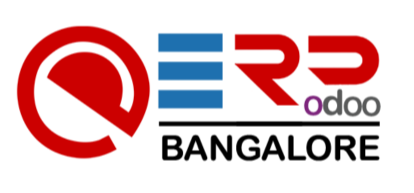Introduction of Get An Accurate Probable Turnover Under Odoo
Definition of Turnover

Turnover, in its essence, represents the rate at which employees leave a company and are replaced by new hires. It encompasses both voluntary departures, such as resignations or retirements, and involuntary separations, including terminations or layoffs. Calculating turnover involves determining the number of employees who have left the organization within a specific timeframe, often expressed as a percentage of the total workforce.
Types of Turnover
- Gross Turnover: Gross turnover refers to the total number of employees who have left the organization, irrespective of the reason, during a given period. It provides a broad overview of employee movement within the company.
- Net Turnover: Net turnover, on the other hand, accounts for the difference between the number of employees who have left and the number of new hires during the same period. It gives a more nuanced perspective by considering the impact of both departures and additions on the workforce.
- Voluntary Turnover: Voluntary turnover occurs when employees willingly choose to leave the organization. Reasons for voluntary turnover may include career advancement opportunities, dissatisfaction with the job or work environment, or personal reasons.
- Involuntary Turnover: Involuntary turnover refers to the termination of employees’ employment against their will. It may result from factors such as poor performance, misconduct, or organizational restructuring.
Importance of Turnover in Business

- Talent Management: Turnover provides insights into the effectiveness of an organization’s talent management strategies. High turnover rates may indicate issues with recruitment, retention, or employee engagement, necessitating interventions to attract and retain top talent.
- Cost Implications: Employee turnover can incur substantial costs for businesses, including recruitment expenses, training costs for new hires, and productivity losses during the transition period. Understanding turnover helps in assessing and mitigating these financial implications.
- Organizational Culture and Morale: Excessive turnover can negatively impact organizational culture and employee morale. High turnover rates may signal dissatisfaction among employees, leading to decreased productivity, increased absenteeism, and higher turnover propensity among remaining staff.
- Succession Planning: Turnover data aids in succession planning by identifying critical roles and potential successors within the organization. It enables proactive measures to develop and groom employees for key positions, ensuring continuity and smooth transitions.
- Performance Evaluation: Turnover metrics serve as key performance indicators (KPIs) for assessing the effectiveness of human resources management. By tracking turnover rates over time and benchmarking against industry standards, organizations can gauge their competitiveness in attracting and retaining talent.
Significance of Accurate Turnover Estimation

Accurate turnover estimation is essential for several aspects of business management, including financial planning, budgeting, and performance evaluation.
- Financial Planning: Turnover data informs financial planning by projecting future workforce needs and associated costs. By anticipating turnover rates, organizations can allocate resources strategically, such as budgeting for recruitment efforts or investing in employee development initiatives to reduce turnover.
- Budgeting: Turnover estimation directly impacts budgeting processes, influencing expenditures related to recruitment, training, and employee benefits. Accurate turnover forecasts enable organizations to allocate resources efficiently and optimize budgetary allocations to address workforce dynamics.
- Performance Evaluation: Turnover metrics contribute to performance evaluation by providing insights into the effectiveness of human resources strategies and initiatives. By comparing actual turnover rates against targets or industry benchmarks, organizations can assess their performance and identify areas for improvement.
- Strategic Decision-Making: Turnover data guides strategic decision-making by informing workforce planning and resource allocation. Whether expanding operations, entering new markets, or restructuring organizational functions, understanding turnover dynamics enables informed decision-making aligned with business objectives.
Challenges in Estimating Turnover:
Fragmented Data Sources:
One of the primary obstacles in estimating turnover is dealing with fragmented data sources. Sales data, inventory records, and financial information are typically stored in separate systems, leading to discrepancies and inefficiencies in analysis. To address this challenge, businesses should invest in integrated software solutions that centralize data from various sources. Implementing an Enterprise Resource Planning (ERP) system can streamline data management processes, enabling smoother analysis and more accurate turnover estimations.
Complex Operations:
Modern businesses often operate in complex environments characterized by multiple sales channels, diverse product lines, and varying pricing structures. These complexities pose significant challenges when estimating turnover, as traditional methods may not adequately capture the nuances of the business model. To navigate this complexity, organizations should leverage advanced analytics and machine learning algorithms. By harnessing data-driven insights, businesses can gain a deeper understanding of customer behavior, market trends, and product performance, thereby improving the accuracy of turnover estimations.
Manual Processes:
Relying on manual data entry and processing is another obstacle to accurate turnover estimation. Manual processes are prone to errors, inconsistencies, and delays, leading to unreliable results and inefficient resource allocation. To mitigate this challenge, businesses should automate repetitive tasks wherever possible. Robotic Process Automation (RPA) technologies can streamline data entry, validation, and reconciliation processes, reducing the risk of errors and enhancing the efficiency of turnover estimation efforts.
Lack of Real-Time Insights:
Timeliness is crucial in turnover estimation, yet many businesses struggle with delayed or outdated information. Legacy systems and manual reporting procedures often result in a lag between data collection and analysis, hampering decision-making processes. To overcome this challenge, organizations should prioritize the adoption of real-time analytics platforms. Cloud-based analytics solutions offer the advantage of instant data access and continuous monitoring, empowering decision-makers with up-to-date insights into sales performance, inventory levels, and market dynamics.
Estimating turnover accurately is essential for informed decision-making and strategic planning. By addressing challenges such as fragmented data sources, complex operations, manual processes, and lack of real-time insights, businesses can enhance the accuracy and reliability of turnover estimations.
Leveraging Odoo for Accurate Turnover Estimation:
Centralized Data Management
One of the key advantages of Odoo is its ability to consolidate sales, inventory, and accounting data into a centralized platform. Traditionally, businesses may have separate systems for managing these functions, leading to data silos and inconsistencies. With Odoo, all relevant data is stored in one place, ensuring seamless access and integration across departments. This centralized approach not only improves data accuracy but also enhances collaboration and decision-making.
Seamless Integration
Odoo offers seamless integration between its various modules, allowing for real-time synchronization of data. This means that when a sales order is placed, inventory levels are automatically updated, and corresponding accounting entries are generated. This real-time visibility into business operations ensures that stakeholders have access to the most up-to-date information, enabling them to make informed decisions quickly. Additionally, integration eliminates the need for manual data entry, reducing the risk of errors and saving time.
Automated Processes
Another benefit of Odoo is its ability to automate repetitive tasks and streamline workflows. By defining rules and triggers within the system, businesses can automate processes such as sales order processing, invoicing, and inventory updates. This automation not only improves efficiency but also reduces the likelihood of errors associated with manual intervention. Additionally, by freeing up time spent on administrative tasks, employees can focus on more value-added activities, such as sales and customer service.
Customizable Reports
Odoo provides powerful reporting capabilities, allowing businesses to generate customizable reports on turnover, sales performance, product profitability, and more. These reports can be tailored to specific requirements, providing stakeholders with insights tailored to their needs. Whether it’s analyzing sales trends, identifying top-performing products, or assessing the profitability of different product lines, Odoo’s reporting tools enable businesses to make data-driven decisions with confidence.
Forecasting Capabilities
One of the key features of Odoo is its forecasting capabilities, which enable businesses to predict future turnover accurately. By analyzing historical data and utilizing predictive analytics algorithms, Odoo can forecast sales trends, anticipate demand fluctuations, and identify potential opportunities or risks. This foresight allows businesses to adjust their strategies proactively, optimize inventory levels, and capitalize on emerging market trends.
Implementing Best Practices:
Data Cleansing and Normalization:
- Data integrity is fundamental for reliable analysis and informed decision-making. Implementing data cleansing and normalization practices ensures that the data stored in Odoo is accurate, consistent, and free from errors or duplicates.
- By cleaning and normalizing data, organizations can enhance the reliability of reports, forecasts, and insights derived from Odoo, enabling stakeholders to make strategic decisions with confidence.
Regular Monitoring and Reconciliation:
- Continuous monitoring and periodic reconciliation of data are essential to identify discrepancies, anomalies, or inconsistencies in Odoo’s databases.
- Through regular reviews, organizations can proactively address issues such as data discrepancies, inventory inaccuracies, or financial discrepancies, preventing potential disruptions to operations and financial performance.
Training and Education:
- Empowering employees with the necessary skills and knowledge to utilize Odoo effectively is critical for maximizing its potential.
- Comprehensive training programs tailored to different user roles and levels of expertise enable employees to navigate Odoo’s functionalities with ease, streamline workflows, and leverage advanced features for improved productivity and efficiency.
Continuous Improvement:
- Embracing a culture of continuous improvement entails iteratively refining processes and configurations in Odoo based on feedback and evolving business requirements.
- Regularly soliciting feedback from users, analyzing system performance, and benchmarking against industry best practices enable organizations to identify areas for enhancement and optimization within Odoo.
- By continuously fine-tuning workflows, customizing modules, and adopting new features or integrations, organizations can adapt to changing business dynamics, enhance operational efficiency, and drive innovation.
Future Trends and Developments:
Emerging Technologies Shaping Turnover Estimation:
- Artificial Intelligence (AI):
AI-powered algorithms are revolutionizing turnover estimation by enabling predictive analytics based on vast datasets. Machine learning algorithms can identify patterns and correlations within employee data, allowing organizations to anticipate turnover risks with unprecedented accuracy. For instance, AI-driven models can analyze factors such as employee satisfaction, performance metrics, and market trends to forecast potential attrition rates.
- Machine Learning (ML):
ML algorithms excel in processing large volumes of data to derive actionable insights. By leveraging historical turnover data and other relevant variables, ML models can develop predictive models that continuously improve over time. These models can identify subtle indicators of employee disengagement or dissatisfaction, enabling proactive measures to mitigate turnover risks before they escalate.
- Internet of Things (IoT):
The IoT ecosystem offers valuable opportunities for monitoring and analyzing employee behavior and workplace dynamics. Smart sensors embedded in office environments can capture data on factors influencing employee satisfaction, such as temperature, lighting, and noise levels. By integrating IoT data with turnover analysis tools, organizations can gain deeper insights into the underlying drivers of attrition and implement targeted interventions to enhance employee retention.
Odoo’s Roadmap and Upcoming Features:
Odoo remains at the forefront of innovation in business management software, continuously enhancing its turnover analysis and forecasting capabilities. Through its comprehensive suite of modules, Odoo enables organizations to streamline HR processes, automate data collection, and leverage advanced analytics for turnover prediction. Some upcoming features include:
- Advanced Reporting and Analytics:
Odoo is integrating advanced reporting and analytics tools that leverage AI and ML algorithms to provide deeper insights into turnover trends. These features enable users to generate customizable reports, visualize key metrics, and identify patterns indicative of turnover risks.
- Enhanced Integration Capabilities:
Odoo is expanding its integration capabilities to seamlessly connect with external data sources, such as employee engagement surveys, performance management systems, and recruitment platforms. By consolidating data from diverse sources, organizations can gain a holistic view of turnover drivers and devise targeted retention strategies.
- Predictive Modeling:
Odoo is developing predictive modeling capabilities that leverage machine learning algorithms to forecast turnover rates with greater accuracy. These models can factor in both internal and external variables, such as economic indicators and industry trends, to anticipate future attrition levels and facilitate proactive workforce planning.
Opportunities for Innovation and Collaboration:
The evolving landscape of business management software presents vast opportunities for innovation and collaboration among industry stakeholders. Key areas for exploration include:
- Cross-Platform Integration:
Collaboration between software providers can facilitate seamless integration between different platforms, enabling organizations to leverage complementary tools for turnover estimation and management. For example, integrating HR management software with employee engagement platforms can enhance the accuracy of turnover predictions by incorporating qualitative feedback.
- Data Privacy and Security:
As turnover estimation relies increasingly on data-driven approaches, ensuring data privacy and security remains paramount. Collaborative efforts to establish industry standards and best practices for data protection can foster trust among users and promote the responsible use of employee data for analytical purposes.
- User-Centric Design:
Innovation in business management software should prioritize user experience and accessibility. Collaborative efforts between software developers and end-users can drive the design of intuitive interfaces, personalized dashboards, and interactive visualizations that empower users to make informed decisions based on turnover insights.
Setting Up Sales and Invoicing Modules
Harnessing the Power of the Invoicing Module:
In tandem with the Sales module, the Invoicing module in Odoo plays a pivotal role in facilitating timely and accurate billing processes. Proper setup of this module involves the following steps:
- Invoice Template Customization:
Customizing invoice templates allows businesses to reflect their brand identity and adhere to regulatory requirements. From incorporating company logos to including specific terms and conditions, personalized invoices enhance professionalism and reinforce the organization’s image. Moreover, Odoo offers flexibility in designing templates to accommodate varying invoice formats across different jurisdictions or industries.
- Payment Terms Configuration:
Establishing clear payment terms is essential for managing cash flow and minimizing payment delays. Within the Invoicing module, businesses can define payment deadlines, specify acceptable payment methods, and set up automated reminders for overdue invoices. By streamlining the invoicing process and enforcing payment policies, organizations can improve liquidity and mitigate financial risks.
- Integration with Accounting:
Seamless integration between the Invoicing module and accounting functions ensures accuracy and consistency in financial reporting. Odoo provides robust integration capabilities, allowing invoice data to flow seamlessly into the general ledger and other financial statements. This eliminates the need for manual data entry and reduces the risk of errors, enabling stakeholders to make informed decisions based on real-time financial insights.
Estimating Turnover and Enhancing Business Performance:
- Accurate Turnover Estimation:
The systematic recording of sales transactions and invoicing activities enables businesses to generate reliable turnover estimates. With comprehensive data on sales volumes, product mix, and pricing trends, organizations gain insights into revenue projections and performance metrics. This facilitates informed decision-making and strategic planning, empowering businesses to capitalize on growth opportunities and mitigate potential risks.
- Operational Efficiency:
Efficiently configured Sales and Invoicing modules streamline processes and reduce administrative burdens. Automated workflows, such as order processing and invoice generation, minimize manual intervention and accelerate transaction cycles. This not only enhances productivity but also frees up resources to focus on value-added activities such as sales expansion and customer engagement.
- Enhanced Customer Satisfaction:
A well-structured sales and invoicing system translates into a seamless customer experience. From timely order fulfillment to accurate billing, organizations demonstrate reliability and professionalism at every touchpoint. This fosters trust and loyalty among customers, driving repeat business and positive word-of-mouth referrals. Additionally, personalized invoicing and flexible payment options cater to diverse customer preferences, further enhancing satisfaction and retention rates.
Setting Up Sales and Invoicing Modules
Harnessing the Power of the Invoicing Module:
In tandem with the Sales module, the Invoicing module in Odoo plays a pivotal role in facilitating timely and accurate billing processes. Proper setup of this module involves the following steps:
- Invoice Template Customization:
Customizing invoice templates allows businesses to reflect their brand identity and adhere to regulatory requirements. From incorporating company logos to including specific terms and conditions, personalized invoices enhance professionalism and reinforce the organization’s image. Moreover, Odoo offers flexibility in designing templates to accommodate varying invoice formats across different jurisdictions or industries.
- Payment Terms Configuration:
Establishing clear payment terms is essential for managing cash flow and minimizing payment delays. Within the Invoicing module, businesses can define payment deadlines, specify acceptable payment methods, and set up automated reminders for overdue invoices. By streamlining the invoicing process and enforcing payment policies, organizations can improve liquidity and mitigate financial risks.
- Integration with Accounting:
Seamless integration between the Invoicing module and accounting functions ensures accuracy and consistency in financial reporting. Odoo provides robust integration capabilities, allowing invoice data to flow seamlessly into the general ledger and other financial statements. This eliminates the need for manual data entry and reduces the risk of errors, enabling stakeholders to make informed decisions based on real-time financial insights.
Estimating Turnover and Enhancing Business Performance:
- Accurate Turnover Estimation:
The systematic recording of sales transactions and invoicing activities enables businesses to generate reliable turnover estimates. With comprehensive data on sales volumes, product mix, and pricing trends, organizations gain insights into revenue projections and performance metrics. This facilitates informed decision-making and strategic planning, empowering businesses to capitalize on growth opportunities and mitigate potential risks.
- Operational Efficiency:
Efficiently configured Sales and Invoicing modules streamline processes and reduce administrative burdens. Automated workflows, such as order processing and invoice generation, minimize manual intervention and accelerate transaction cycles. This not only enhances productivity but also frees up resources to focus on value-added activities such as sales expansion and customer engagement.
- Enhanced Customer Satisfaction:
A well-structured sales and invoicing system translates into a seamless customer experience. From timely order fulfillment to accurate billing, organizations demonstrate reliability and professionalism at every touchpoint. This fosters trust and loyalty among customers, driving repeat business and positive word-of-mouth referrals. Additionally, personalized invoicing and flexible payment options cater to diverse customer preferences, further enhancing satisfaction and retention rates.
Conclusion
In conclusion, Odoo offers powerful capabilities for estimating turnover accurately, enabling businesses to make informed decisions and achieve their financial goals. By leveraging its integrated modules, analyzing historical data, and implementing forecasting models, businesses can obtain precise insights into their probable turnover and optimize performance accordingly. With Odoo as a trusted partner, businesses can navigate the complexities of today’s business environment with confidence and clarity.
Faqs
- Is probable turnover in Odoo accurate?
The accuracy of probable turnover in Odoo depends on the quality of data input, the relevance of factors considered, and the accuracy of forecasting methods employed.
- What data does Odoo require to generate accurate probable turnover estimates?
Odoo requires data such as sales history, product information, market trends, customer behavior, and other relevant metrics to generate accurate probable turnover estimates.
- Can probable turnover in Odoo be adjusted manually?
Yes, users can manually adjust probable turnover in Odoo to account for factors not captured by automated processes or to fine-tune the estimates based on additional insights.
- How often should probable turnover be reviewed and updated in Odoo?
It is advisable to review and update probable turnover in Odoo regularly, ideally on a monthly or quarterly basis, to reflect changes in market conditions, business strategies, and other relevant factors.
- What reports or tools are available in Odoo for analyzing probable turnover?
Odoo provides various reporting tools and modules, such as sales analysis reports, forecasting dashboards, and financial management tools, to analyze probable turnover and related metrics.
- Does Odoo integrate with external data sources for enhancing probable turnover calculations?
Yes, Odoo supports integration with external data sources and third-party applications to enrich probable turnover calculations with additional market data, economic indicators, and other relevant information.
- Can probable turnover in Odoo be segmented by product, customer, or region?
Yes, probable turnover in Odoo can be segmented and analyzed by various dimensions such as product categories, customer segments, geographic regions, and sales channels.
- What are the potential challenges in accurately estimating probable turnover using Odoo?
Challenges may include data inconsistencies, inaccuracies in forecasting models, unexpected market changes, and limitations in data integration or analysis capabilities.
- Is there a way to track the accuracy of probable turnover predictions in Odoo over time?
Yes, users can track the accuracy of probable turnover predictions by comparing them with actual sales data and performance metrics over specific periods, enabling continuous improvement in forecasting models.
- Can probable turnover in Odoo be used for financial planning and budgeting purposes?
Yes, probable turnover estimates generated in Odoo can serve as valuable inputs for financial planning, budgeting, and resource allocation decisions within an organization.
- Does Odoo provide alerts or notifications for significant deviations in probable turnover forecasts?
Yes, Odoo can be configured to send alerts or notifications when there are significant deviations between predicted and actual turnover, enabling timely corrective actions or adjustments.








